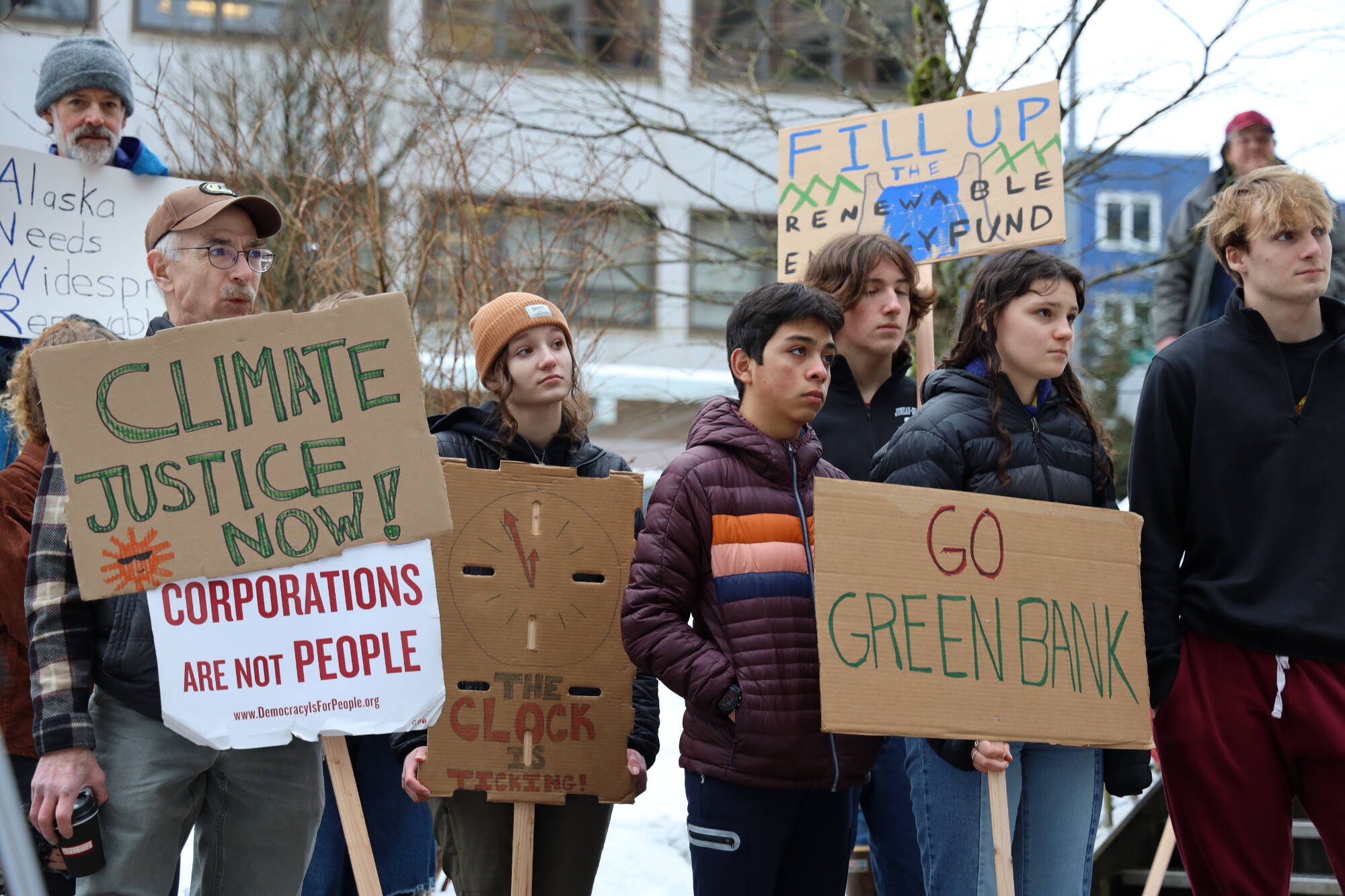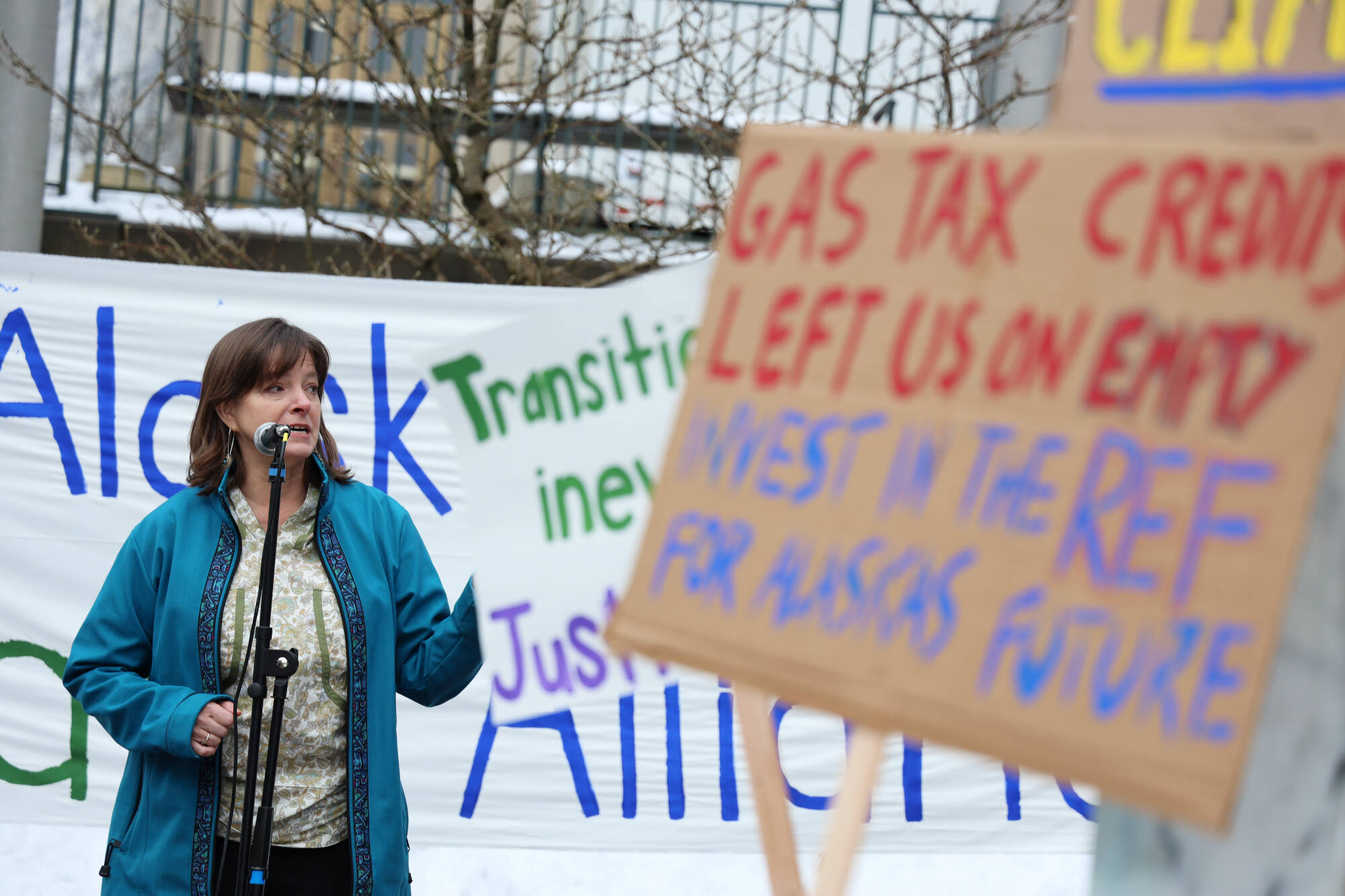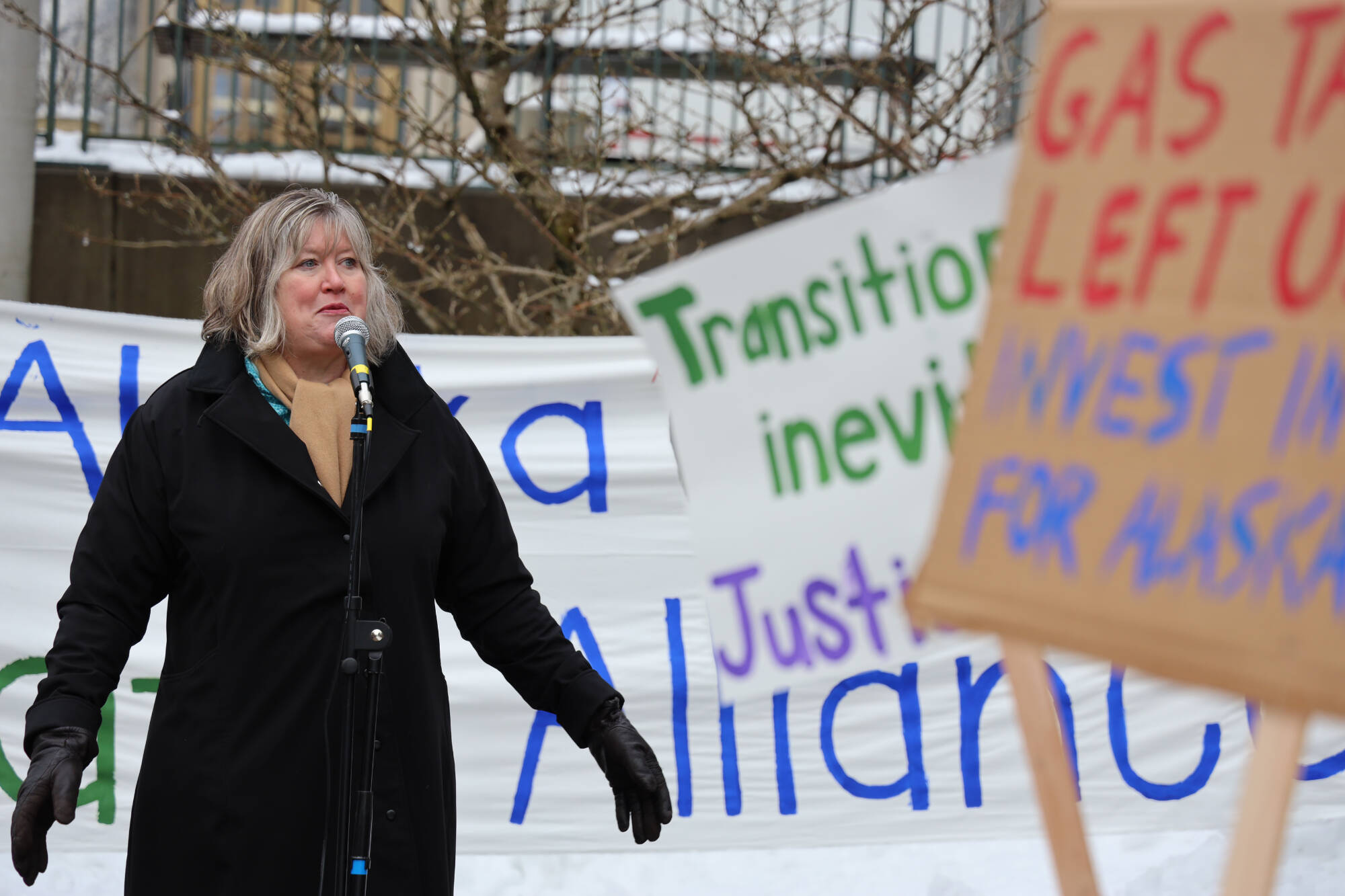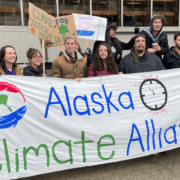Climate activists hold rally near the Capitol
[cs_content][cs_element_section _id=”1″ ][cs_element_layout_row _id=”2″ ][cs_element_layout_column _id=”3″ ][cs_element_text _id=”4″ ][cs_content_seo]Climate activists from around Alaska held a rally near the Alaska State Capitol Friday afternoon in support of legislative action to improve Alaska’s renewable energy development and future sustainability.
“What we do today right here, how our voices rise up from Áak’w Kwáan land all the way up through this building will only affect us, it will affect all our generations,” said Paulette Moreno, Tlingit climate activist and member of the Indigenous Navigation Council. “It is important that our voice be heard.”
Around 30 people attended the snowy rally at the Dimond Courthouse Plaza holding signs and planting them in a pile of snow that gathered around the William Henry Seward statue.
Clarise Larson / Juneau Empire Climate activists hold a rally outside the Alaska State Capitol Friday afternoon in advocacy for legislative action to improve Alaska’s renewable energy development and future sustainability.
The group included multiple leaders of climate activist organizations from across the state and legislators including Democrats Rep. Sara Hannan of Juneau, Rep. CJ McCormick of Bethel, and Rep. Donna Mears of Anchorage and independent Rep. Alyse Galvin of Anchorage.
Clarise Larson / Juneau Empire Independent Rep. Alyse Galvin of Anchorage speaks to a crowd of climate activists who held a rally outside the Alaska State Capitol Friday afternoon in advocacy for legislative action to improve Alaska’s renewable energy development and future sustainability.
The handful of speakers from groups a part of Alaska Climate Alliance including the Southeast Alaska Conservation Council, 350Juneau, Fairbanks Climate Action Coalition and the Alaska Center advocated for action on four legislative priorities which included establishing a Green Bank within the Alaska Housing Finance Corporation, enacting a Renewable Portfolio Standard, passing Community Solar legislation and renewing and strengthening the Renewable Energy Fund.
“We need our senators and representatives to wake up to the enormity of the climate crisis,” said Elaine Shroeder, co-chair of 350Juneau, in an interview with the Empire.
Hannan, Mears and Galvin each gave a short speech to the crowd and said it can be hard to change certain legislators’ minds when it comes to the need for climate action, and said changes come at the ballot box.
Clarise Larson / Juneau Empire Rep. Sara Hannan of Juneau speaks to a crowd of climate activists who held a rally outside the Alaska State Capitol Friday afternoon in advocacy for legislative action to improve Alaska’s renewable energy development and future sustainability.
“With 17 new members in the House, our age going down, we were very successful in replacing some old staunchly oil advocates with some young renewable advocates and in two years we have the opportunity to change more seats and we have to continue to do it,” Hannan said.
Hannan said she wanted to see other Alaska communities — large and small — find similar success in renewable energy as Juneau has been able to. She also pointed to heat pumps as an energy efficient alternative to furnaces that has been largely adopted in Juneau and said she wants to see more communities in Alaska transition to the alternative heating mode.
In an interview with the Empire after the event, Hannan said she is supportive of renewing the Renewable Energy Fund but said it was too early in the budgeting process to say how much more she’d like to see be included with the renewal.
“If we don’t extend it, it evaporates,” she said.
In response to a rally participant suggesting adding $100 million, Hannan noted to the Empire that the state’s budget for the fiscal year 2024 is expected to spend at a deficit. Gov. Mike Dunleavy’s proposed budget for Fiscal Year 2024 includes a projected $250 million deficit that will need to be covered with the state’s roughly $2 billion in reserve funds, but legislative finance leaders say the actual deficit is may be $400 million to $500 million.
Hannan said she thinks a key solution to increasing renewable energy across Alaska is the use of run-of-river hydroelectricity, systems that use natural water flow to generate electricity, which is an energy system Juneau has been benefiting from and pioneered since early hydropower development. Hannan said she is interested in projects bringing opportunities to expand run-of-river hydroelectricity into small and rural communities in Alaska.
Originally published on February 3, 2023 by the Juneau Empire.\n\n

 [/cs_content_seo][/cs_element_layout_column][/cs_element_layout_row][/cs_element_section][/cs_content]
[/cs_content_seo][/cs_element_layout_column][/cs_element_layout_row][/cs_element_section][/cs_content]









